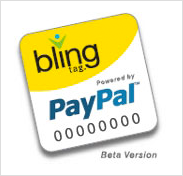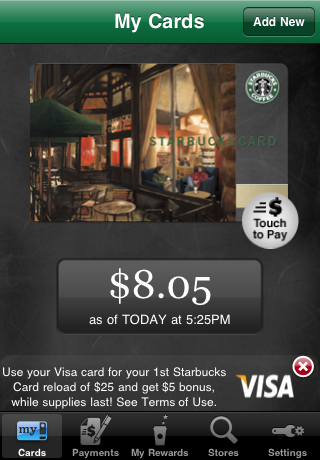A new O’Reilly/PayPal report on web-native payment platforms, “ePayments: Emerging Platforms, Embracing Mobile and Confronting Identity,” is now available for download. Among the topics covered in the report are the rise of payment platforms, the mobilization of money, and the advent of contactless payment in mobile commerce.
The following excerpt looks at three early mobile payment applications and what they might mean for mobile payment’s widespread adoption. Additional excerpts from the report will be featured here on Radar throughout the week.
Stop me if you’ve heard this before, but by this time next year you’ll be buying stuff with your phone. Oh, you have heard that before? Like, every year since the ’90s? Me, too. And like flying cars or 3D printers, they’re always just a little further down the road. But at the risk of being embarrassed again, I think the day is finally upon us.
You can already buy things using your smart phone, of course. On an iPhone, for example, you can buy digital goods like music or movies at the iTunes store. You can add an Amazon app and buy just about any kind of real good they sell and it’ll show up at your door. But it’s still rare to use your phone like a credit card in the physical world, waving or tapping it at a register and having the payment processed through the cloud.
 In the past year or so, we’ve seen several experiments that signal the real deal is not far off. One involved PayPal and Bling Nation, a startup that offered RFID tags that mobile phone users could stick onto their phones for use at 150 or so merchants in the Silicon Valley area. Users could pay for services at the participating merchants by tapping the tag on a piece of hardware (called a Blinger) at the point of sale. Bling subtracted the purchase amount from a prepaid account or could bill it to the user’s PayPal account. It then texted a receipt and any relevant balance information to the user’s phone. A key feature of Bling’s system was the follow-up with future offers (for example, coupons on subsequent purchases) and rewards.
In the past year or so, we’ve seen several experiments that signal the real deal is not far off. One involved PayPal and Bling Nation, a startup that offered RFID tags that mobile phone users could stick onto their phones for use at 150 or so merchants in the Silicon Valley area. Users could pay for services at the participating merchants by tapping the tag on a piece of hardware (called a Blinger) at the point of sale. Bling subtracted the purchase amount from a prepaid account or could bill it to the user’s PayPal account. It then texted a receipt and any relevant balance information to the user’s phone. A key feature of Bling’s system was the follow-up with future offers (for example, coupons on subsequent purchases) and rewards.
To protect against fraud, Bling’s technology used the equivalent of a one-time password, which was updated after each tap transaction to prevent replay attacks. The system had the potential to include real-time risk analysis that could trigger the request of a PIN for a transaction that falls outside of normal parameters. If the customer exceeds a predetermined rate of transactions, purchases an expensive item, or if Bling Nation notices a lot of geographic variability over a short period of time, when a consumer taps a BlingTag, she could be asked to supply a PIN. In this way, Bling Nation adapted from single-factor to multi-factor authentication based on a series of real-time risk analysis algorithms. (In the months since then, Bling Nation’s business model appears to have shifted from the technology to the rewards platform. )
While Bling Nation’s RFID and the upcoming near field communication, or NFC, technology we’re likely to see from Apple and Android rely on a close-range wireless system, Bump Technologies’ system works through the cloud, making the connection based on the proximity and similarity of “bump” of two devices. Bump’s system allows two mobile phones (iPhone, Android, or Blackberry) to exchange data when tapped together. That data, which travels through the network rather than via radio waves between the two devices, could be photos, contact information, or payment. PayPal’s mobile app relies on Bump technology to let two phone users tap payment from one phone to the other.
 Starbucks’ recently widened mobile payment platform uses yet another technology: a simple visual scan of a bar code. You can install the Starbucks mobile app on your phone and enter the number of a Starbucks card you buy at the register. (You can add more funds to the card online, too.) When you want to make a purchase at a Starbucks register, you simply launch the app and hit “Touch to Pay.” The app displays a unique bar code that you scan at the register to debit the amount of the transaction (known by the register, which is attached to the scanner). Your card amount is debited and off you go with your coffee cake.
Starbucks’ recently widened mobile payment platform uses yet another technology: a simple visual scan of a bar code. You can install the Starbucks mobile app on your phone and enter the number of a Starbucks card you buy at the register. (You can add more funds to the card online, too.) When you want to make a purchase at a Starbucks register, you simply launch the app and hit “Touch to Pay.” The app displays a unique bar code that you scan at the register to debit the amount of the transaction (known by the register, which is attached to the scanner). Your card amount is debited and off you go with your coffee cake.
These three examples, and other experiments like them, are harbingers of the coming wave of mobile payments. As new versions of the iPhone, Android phones, and others from RIM, Nokia, and HP/Palm roll out with payment capabilities, subscribers may need some convincing to change their habits from the wallet-based credit card to the phone-based digital wallet. For merchants and payment providers, the math is easy: they welcome the opportunity to know more about where you shop, when you go there, who you’re with and what you buy. The value proposition for consumers is a little less clear: What will they get in return for giving up that information? While we would like to think they will receive good information (reviews, directions, notifications) and maybe even a coupon or discount, we can’t count on it. After all: think of how much information hundreds of millions of Facebook, Foursquare, Twitter, Yelp, and Gowalla users have been willing to give up, just to say “hi” or to get a 100-pixel badge.
Excerpts from “ePayments: Emerging Platforms, Embracing Mobile and Confronting Identity” will be published throughout the week. You can download the full report here.
Related:
